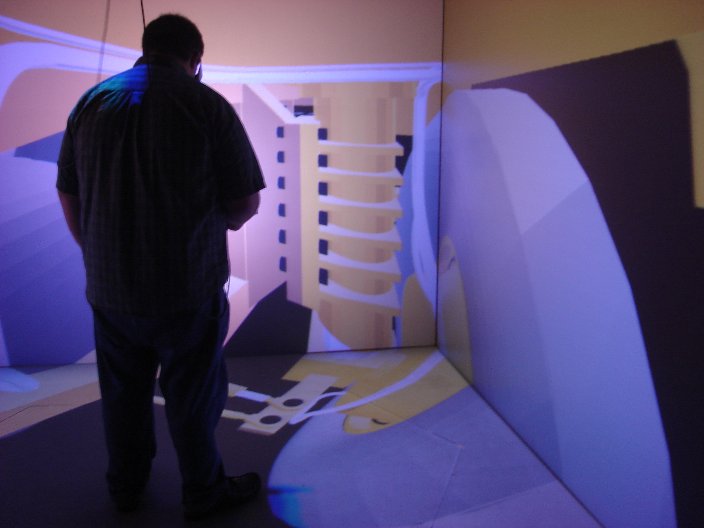
The Virtual Environment (VE) Applications to Improve Mining Health & Safety Training project by the Virginia Center for Coal and Energy Research is funded by the National Institute for Occupational Safety and Health (NIOSH) and aims to investigate technologies and intervention strategies for reducing injuries and fatalities from powered-haulage equipment in the mining industry through improved worker training using virtual environments (VEs).
The project focuses on two primary operational areas of metal/non-metal mining: haul truck incidents and in-place conveyor systems. The objectives for each primary operational area are to identify training needs; design, create and test VE training applications; and evaluate the VE training applications. Desktop and CAVE versions of the VE training applications are being developed to also evaluate the benefits of immersion.
Haul Truck VE Training Application
For the haul truck training, the VE application is focused on training drivers for the pre-shift inspection of off-road haulage trucks. The application consists of three phases: the virtual tour, the virtual assessment, and failure animations. During the virtual tour, the user is automatically guided around a virtual haul truck while parts to inspect and defects to look for are pointed out and explained. For the virtual assessment, the user is expected to take the knowledge acquired during the virtual tour to properly inspect a virtual haul truck for defects and to identify the proper actions to take. Finally, if the user makes any mistakes during the virtual assessment, a failure animation is shown to the user relating to the mistake. This is to reinforce the idea of performing pre-shift inspections correctly to avoid dire consequences.
Conveyor System VE Training Application
For in-place conveyor system training, the VE application is focused on training users to work around a conveyor belt system. The application consists of two phases: the virtual tour and the virtual shift. During the virtual tour, the user is automatically guided around a conveyor system while problems to fix and hazards to avoid are pointed out and explained. For the virtual shift, the user is expected to take the knowledge acquired during the virtual tour to properly complete a task to fix a problem with the conveyor system. The user must also properly avoid hazards. If the user makes any mistakes during the virtual shift, an animation demonstrating the consequences is shown and the user must start the shift over.

